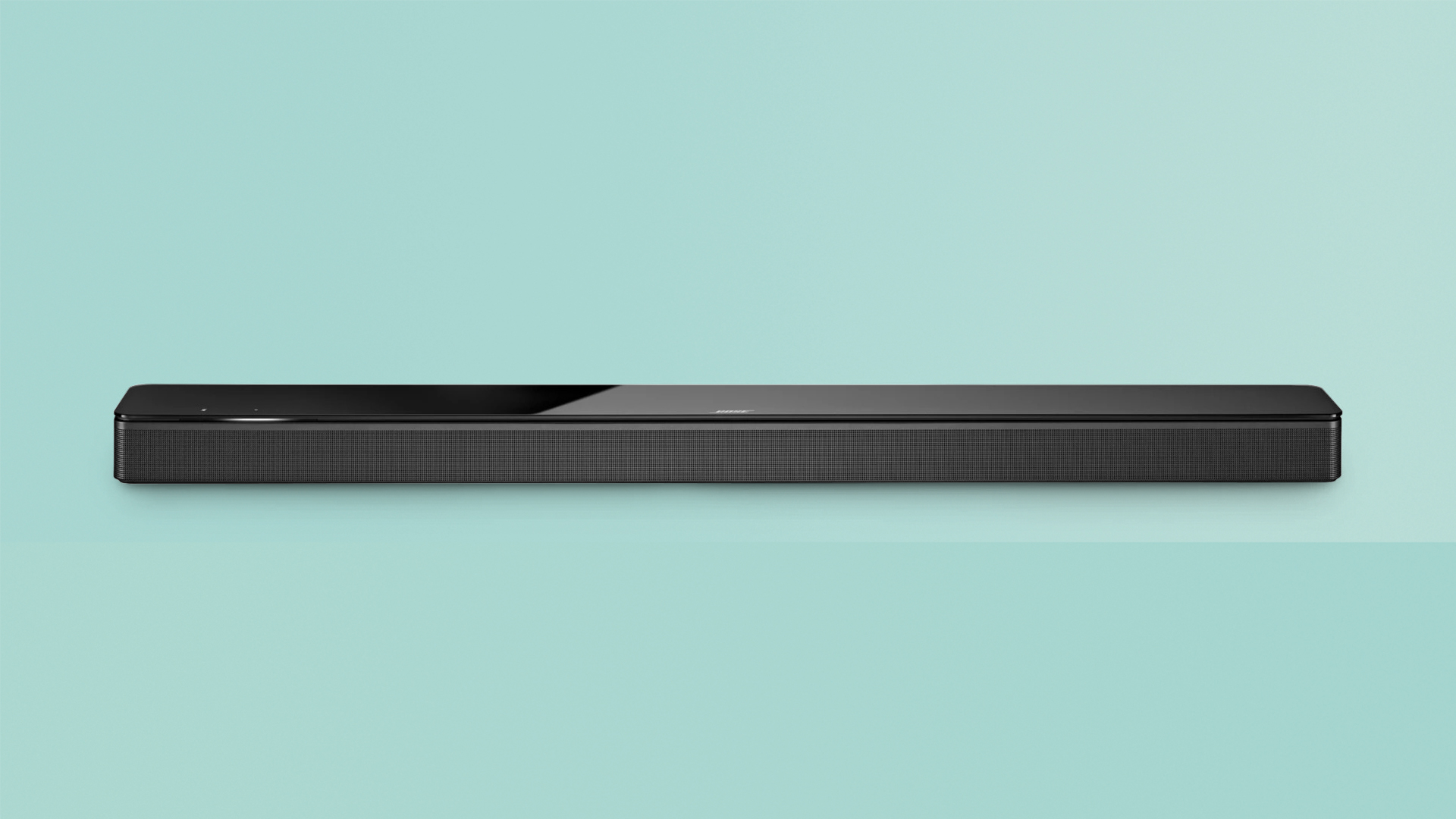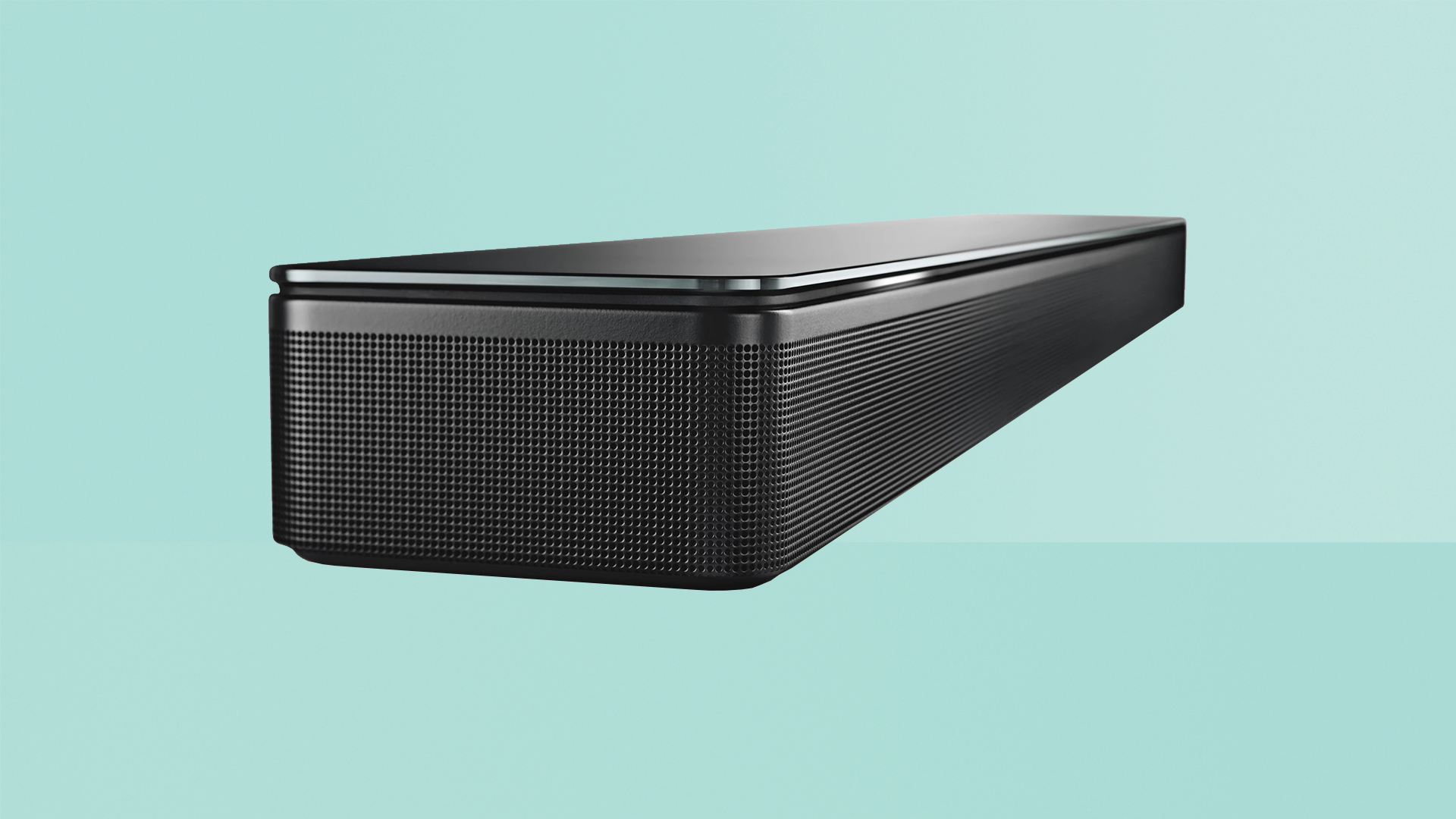Bose Soundbar 700 review: impressive audio for a small soundbar
Bose's Soundbar 700 is the rare premium soundbar that fits smaller TVs, but it's missing some important features for its price tag

The Bose Soundbar 700 delivers big, polished sound from an impressively compact body, and it's easy to use. But it can only take the sound so far, it's expensive, and it's missing some key features at this price.
-
+
Big sound from a little body
-
+
Attractive glass-topped design
-
+
Backlit remote control and helpful app
-
-
Expensive for what it offers
-
-
Sound can become a little muddy at loud volumes
-
-
No LED display
Why you can trust T3

We had big expectations for this Bose Soundbar 700 review. Bose has a well-earned reputation for getting big sound out of small boxes. On paper at least, should make it perfectly positioned to deliver some of the best soundbars.
So here's the Bose Soundbar 700, which is currently the brand’s premium soundbar offering. While all the other companies go big for their high-end models, this delivers on the Bose little box/big sound promise in spades, getting lots more volume out of its strikingly compact form than you might reasonably have expected.
It looks smart too, so certainly seems the kind of thing to pair with one of the best TVs if you're not planning on getting a huge set, but still expect your gadgets to come with a premium finish – which not all smaller and cheaper soundbars do.
However, the Soundbar 700 lacks a couple of key features, and in doing so falls victims to some strong competition, leaving it as a good, but not truly great, option. Let's explore why.

Bose Soundbar 700 review: Price and features
Bose is usually found at the premium end of whatever audio product group it decides to get involved in – and so it proves with the Soundbar 700. At an official price of £799/$799/AU$1,199 for a one-body soundbar (meaning it ships without any external subwoofer or rear speakers), its price aligns closely with the Sonos Arc.
To save on your order, it's worth checking our Bose discount codes.
The Soundbar 700 enjoys some genuinely premium features for the premium price. Particularly great is its Adaptiq auto calibration system. This gets you to sit in the five most-used seating positions in your room with a little headset on, while the soundbar outputs a series of test sounds so that it can optimise its sound to your room layout. This really does make a difference to the sound’s impact and dynamics, so definitely take the time to run the routine.
Get all the latest news, reviews, deals and buying guides on gorgeous tech, home and active products from the T3 experts
There are other premium set up and day to day use features, too, that I’ll discuss more in the Design and Usability section a little further down.
The Soundbar 700’s connections, though, aren’t as high-end as I’d like. Particularly unfortunate is the presence of just one HDMI, meaning you can only feed it audio over HDMI from TVs with ARC/eARC HDMI outputs. You can’t route audio and video through the soundbar, using it as a convenient switchbox. Other connections include, thankfully, an optical audio input, plus Wi-Fi and Bluetooth support, complete with AirPlay 2.
It’s a shame, too, to find no support on the Soundbar 700 for either of the Dolby Atmos or DTS:X object-based sound formats.
I guess Bose might argue that such support isn’t necessary on a soundbar that doesn’t carry any up-firing drivers, and ships with no included rears or subwoofers. However, you can add optional external wireless bass and surround sound speakers to the Soundbar 700 (though you'll more than double the price if you do).
Also, many other soundbars now – including some vastly cheaper models than the Soundbar 700, such as the Sony HT-G700 – use clever acoustic processing to try to deliver some sort of Dolby Atmos or DTS:X effect, and do it well.
One final disappointment is that the Soundbar 700 doesn’t carry nearly as many drivers as some of its similarly priced rivals. Just four, actually, all positioned behind the mid section of the soundbar’s grilled front. The Sonos Arc, by comparison, has 11.
These are custom-designed to retain clarity from within a slim profile, though. And crucially, they are backed up by innovative PhaseGuide technology, where small transducers in two elongated areas either side of the main driver array direct beams of sound in multiple directions to push the sound way beyond the physical confines of the speaker’s bodywork. Ports on the rear, meanwhile, use a resistant screening design to produce cleaner bass.

Bose Soundbar 700 review: Sound quality
The Soundbar 700 does some things very well. First, it manages to avoid pretty much all distracting distortions, despite being able to go much, much louder than you’d expect such a diminutive design to go.
Bass doesn’t phut or drop out. Trebles only sound at all harsh or shrill under the absolute most extreme pressure. And the well-built bodywork never buzzes or rattles, no matter how hard a work out it’s given.
Next, the Soundbar 700 projects sound impressively far beyond its diminutive bodywork. There’s enough left and right dispersion to spread right across even a large living room wall, creating a sense of cinematic scale way beyond anything any TV’s built-in speakers can do.
There’s even a slight sense of verticality to the Soundbar 700’s audio, despite its narrow bodywork and lack of upfiring speakers. This slight verticality is particularly useful for helping dialogue sound like it’s coming from the screen rather than the speaker.
The way the sound system is designed, with its four forward-facing drivers and ‘PhaseGuide’ multidirectional beam elements, also means that despite the wide dispersion, vocals still sound clean and locked in place at the heart of the soundbar’s sound. There’s no unwanted voice channel ‘leakage’ into the wider soundstage, either.
The soundstage doesn’t always feel completely cohesive, though. With film soundtracks, effects placement can feel a bit vague, and the sense of space can sometimes become a bit muddy and one-dimensional, especially at the extreme left and right edges of the soundstage.
The Soundbar 700’s acoustic design can cause some problems with music, too. Lead vocals sound good – clean, dynamic and clear. There’s a strong sense of stereo separation, too, and strangely I felt that the sound with music sounded even freer of the confines of the 700’s bodywork than big movie mixes did. But to my ears, some elements of the rich musical mixes sometimes lacked a little definition, clarity and balance.
The Soundbar 700 lacks a bit of bite and attack with big movie soundtracks, too. For instance, compared with some other high-end soundbars, big explosions can lack impact. Partly because the bass lacks the range (without adding the optional sub, anyway) and nimbleness to deliver sudden hard hits, and partly because the drivers can’t find enough extra gears to give such potent moments room to expand and swell.
At high volumes dense soundtracks can start to sound slightly muddy, with bass becoming a bit soupy. And finally, having become accustomed to premium soundbars like the Sonos Arc or Samsung HW-Q950T delivering specific and clearly defined height channel effects, the Soundbar 700’s much more generalised and limited verticality feels rather limited for its money.

Bose Soundbar 700 review: Design & usability
The Soundbar 700 has a suitably premium look and feel. Its also solid and heavy enough to point to some seriously well made innards. Its tempered glass top edge looks cool, and houses a couple of touch-response buttons in the front left corner. Rounded corners and a wrap-around grille soften the impact it makes on your living room – as does its striking diminutive size. At 978x57x108mm (38.5x2.25x4.25 inches), it's around the same width as a 43-inch TV, which is incredibly small for a high-end soundbar. The Sonos Arc, for comparison, is as wide as a 55-inch TV, so the Bose carves itself out a niche simply by its compact nature.
Setup is made pretty straightforward by the Bose Music app (for iOS and Android). When you first fire Bose Music up and plug the speaker in, the app guides you through everything from connecting the speaker to your Wi-Fi network to adding your subscription music services and setting up either Alexa or Google Assistant voice control.
Another premium touch is the Soundbar 700’s remote. This is unusually large, lovely to hold thanks to its rubberised finish, and, best of all, backlit, so you can still find the buttons you want in a dark room. In fact, thanks to a built-in motion sensor, the backlight comes on as soon as you pick the remote up; you don’t even have to find an initial button to press. The button backlighting is even contextual, so that only the buttons useful to your specific set up illuminate.
One disappointment on the usability front is the lack of any LED display on the soundbar to help you keep track of inputs, volume levels and so on. It’s fairly common for affordable soundbars not to have LEDs, but many premium models do. There is some compensation for this, though, in the shape of a cute glowing stripe running along the top of the left side that lets you know when the soundbar is responding to your button presses or voice commands.
Bose Soundbar 700 review: Verdict
There are lots of things we like about the Bose Soundbar 700. It’s a lovely design, and pulls off that classic Bose trick of serving up a much bigger sound – in both volume and sound stage size terms – than you’d think possible from such a diminutive product. It’s got some nice setup features, too.
As a single-box speaker, it lacks the raw power that a model with a subwoofer can give you, though you may not mind that. More importantly, though, it doesn't have the dynamic punch of the Sonos Arc. The lack of HDMI throughput and Dolby Atmos/DTS:X decoding are also very disappointing on a soundbar that costs this much.
Finally, while it’s good that you can optionally add an extra sub and rear speakers to the Soundbar 700, the price of these extras is extremely high – you'll be paying almost £2,000/$2,000. The price is actually similar to Sonos' equivalent add-ons for the Arc, but compared to the Samsung HW-Q950T's package that offers all four boxes for around £1,200/$1,200, it's just too steep.
The Bose doesn't perform badly. It's just that there are any number of option that perform better for the price.
John Archer has been testing TVs and AV gear for over 25 years, having worked on Home Cinema Choice magazine. He's a contributor to Forbes, TechRadar, Trusted Reviews, Wired and many more places – if you've owned a TV in the last couple of decades, John's probably reviewed it somewhere. He's seen so many hot new technologies come and go, like tears in the rain.
